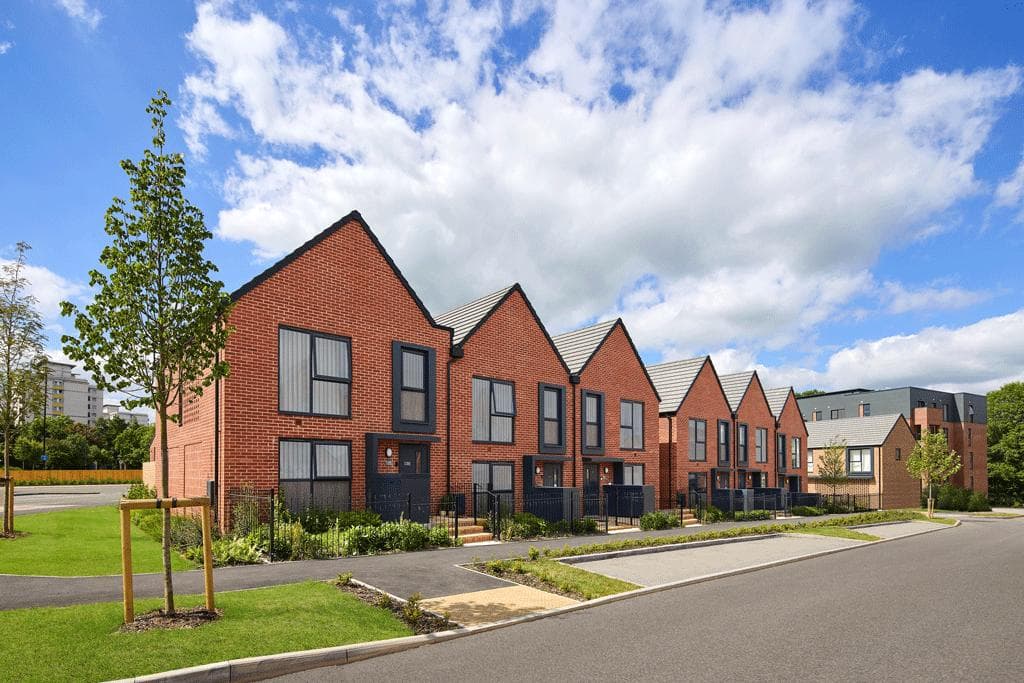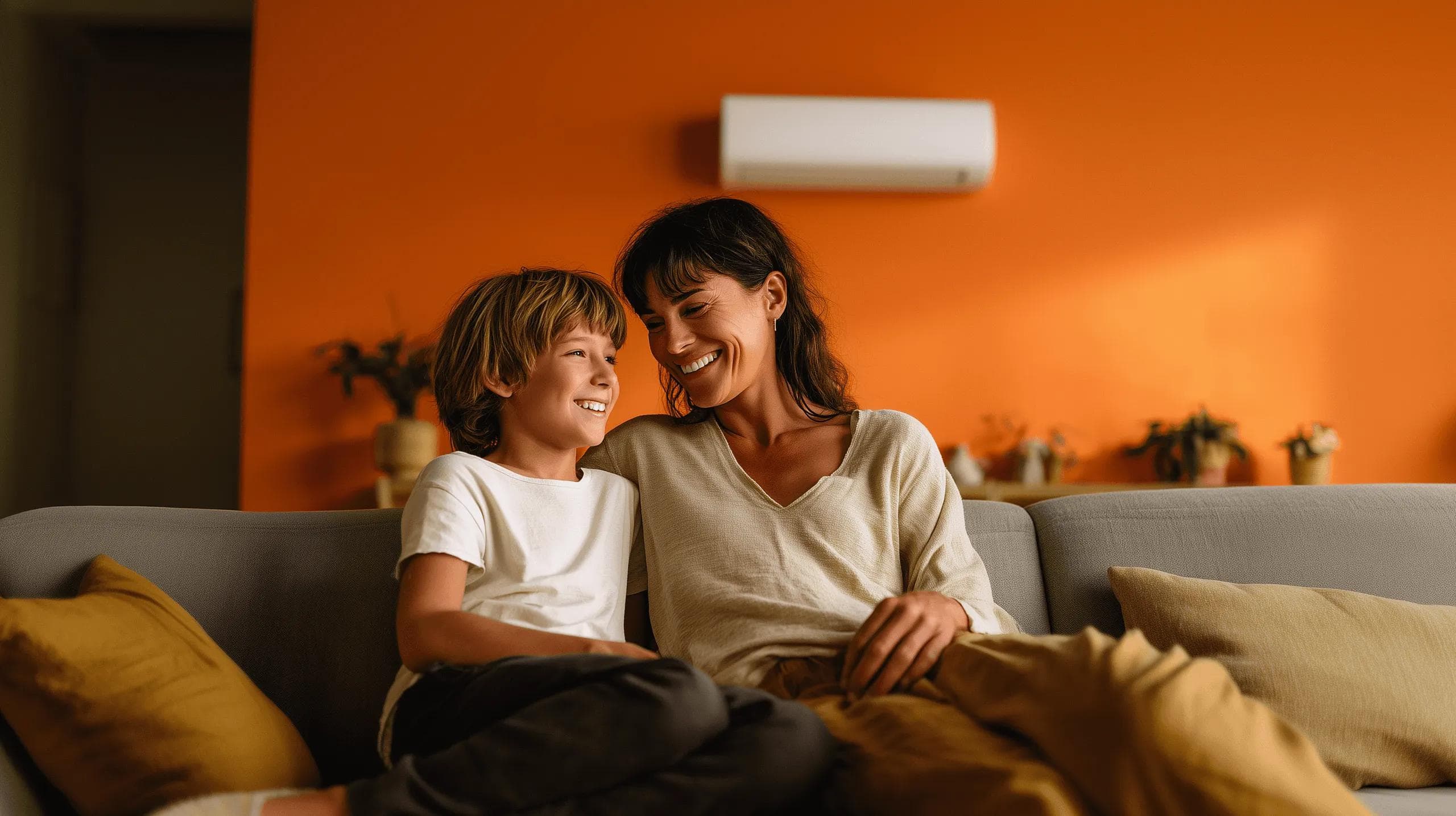Passive cooling at The Mill: how Kensa helped futureproof Cardiff homes
- LocationCardiff, Wales
- SectorPrivate
- Completion DateAug 2020
Location: The Mill, Cardiff
Property type: Mid-terrace, 2-bed home
Ground source installation: July 2020
Cooling retrofit: Summer 2022
Cooling system: Single high-level fan coil in east-facing living/dining room
Performance: Maintained 19–21 °C during 2022 heatwaves, even at 32 °C outdoors
Running cost: Around £0.50/day for 8 hours’ use (27p/kWh)
The Mill is a modern urban village in the heart of Cardiff, developed by Lovell, Tirion Homes and Sero. With over 800 homes planned, it's a community built for the future—featuring innovative, low-carbon technologies like heat pumps for heating and cooling, designed to cut costs and carbon.
In partnership with Sero, Kensa installed  What is a Ground Source Heat Pump?Ground Source Heat Pumpsground source heat pumps (GSHPs) in three homes on the site as a demonstrator of how new developments could meet the
What is a Ground Source Heat Pump?Ground Source Heat Pumpsground source heat pumps (GSHPs) in three homes on the site as a demonstrator of how new developments could meet the Future Homes Standard 2025: what it means for developers, planners, residents and the UK's heating future Future Homes Standard & Building Regulation Changes 2025 Future Homes Standard, expected to come into force in 2025. Each of the 3 homes shares a single 121-metre borehole, making it a smart and space-efficient solution.
Future Homes Standard 2025: what it means for developers, planners, residents and the UK's heating future Future Homes Standard & Building Regulation Changes 2025 Future Homes Standard, expected to come into force in 2025. Each of the 3 homes shares a single 121-metre borehole, making it a smart and space-efficient solution.
But as UK summers heat up,  Cost effective cooling with ground source heat pumpsGround source heat pump cooling cooling is fast becoming as important as heating. Extreme temperatures are proven to increase the risk of mortality, and there is evidence to suggest this is on the rise. In 2022, we returned to retrofit one of the homes with passive cooling, using our existing GSHP network.
Cost effective cooling with ground source heat pumpsGround source heat pump cooling cooling is fast becoming as important as heating. Extreme temperatures are proven to increase the risk of mortality, and there is evidence to suggest this is on the rise. In 2022, we returned to retrofit one of the homes with passive cooling, using our existing GSHP network.
Passive cooling works by circulating cool ground loop fluid directly into the home, bypassing the heat pump itself. This cool fluid is delivered to a high-level fan coil unit installed in the living room. The result? Comfortably cool air without the energy demand of traditional air conditioning.
Because the ground stays at a consistent 12°C even in summer, it’s an ideal natural source of cooling. Since no compressor is used, the system runs on minimal energy- just the small cost of a circulating pump.
Before passive cooling, the shared living/dining room reached 25–26°C during summer days when the outside temperature was only 22–23°C.
Once installed, the passive cooling system ran for just 8 hours a day to maintain a consistent 19–21°C - even during the year’s hottest day, when outdoor temperatures hit 32°C.
In contrast, rooms without cooling soared to nearly 30°C.
Running passive cooling costs just around 50p a day for around 8 hours of use, based on current energy prices of 27p/kWh. That’s significantly cheaper than air conditioning—and more efficient, too, as equivalent air conditioning units use 7.2x more electricity.
Better still, the process helps recharge the ground array by returning heat to the earth. That stored energy improves the heat pump’s efficiency for hot water in summer and heating in winter. It’s a smart way to reuse energy that would otherwise be wasted.
John Lloyd, Mechanical & Technical Manager, Sero
The passive cooling system at The Mill is extremely effective. It performs very quickly, bringing the living room down to a comfortable temperature within 45 minutes of being turned on.
David Broom, Sales Director, Kensa
Passive cooling is ultra-low cost and particularly useful as any energy taken out of the building helps to recharge the ground. Energy is too valuable a commodity to waste, so recycling it in this way makes complete sense.